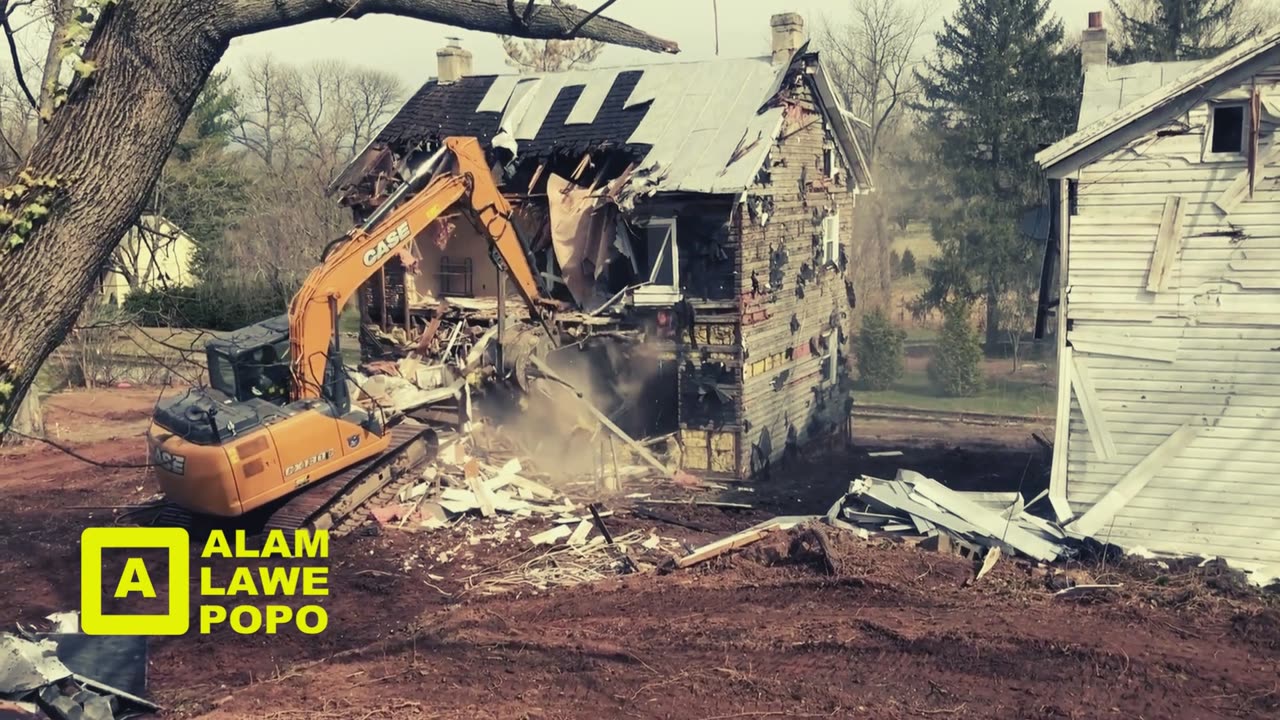Premium Only Content

All About Excavator
An excavator is a heavy construction machine consisting of a boom, dipper (or stick), bucket, and cab on a rotating platform known as the "house." The house sits atop an undercarriage with tracks or wheels. Excavators are commonly used in construction, mining, and other earthmoving applications to dig trenches, foundations, and holes. They can also be equipped with various attachments, such as hydraulic breakers, grapples, or augers, to perform different tasks.
Excavators are highly versatile and can handle a wide range of jobs due to their ability to rotate 360 degrees and their powerful digging capabilities. The operator controls the machine from the cab, manipulating the boom and bucket to perform precise excavation work. Excavators come in various sizes, from compact mini-excavators suitable for small spaces to large, heavy-duty machines used in major construction projects.
Excavators come in various types and sizes, each designed for specific tasks and working conditions. Here are some common types of excavators:
1. Crawler Excavator: These excavators move on tracks, providing stability and mobility on uneven terrain. They are suitable for heavy-duty tasks and large construction projects.
2. Wheel Excavator: Instead of tracks, wheel excavators have wheels for movement. They are more mobile on smooth surfaces and are often used in urban construction projects.
3. Mini Excavator: Compact and lightweight, mini excavators are ideal for small-scale projects or when working in confined spaces. They are often used in landscaping, utility work, and residential construction.
4. Backhoe Loader: While not strictly an excavator, backhoe loaders combine a loader on the front and a backhoe on the rear. They are versatile machines used for digging, lifting, and loading.
5. Amphibious Excavator: These excavators are designed to work in aquatic environments, such as swamps, lakes, or shallow water. They have special attachments or pontoons to float on water surfaces.
6. Dragline Excavator: Typically used in large-scale mining operations, dragline excavators are massive machines with a long boom and bucket. They are used for removing overburden in mining operations.
7. Long Reach Excavator: Equipped with an extended arm, long reach excavators are used when additional reach is required, such as dredging, deep excavation, or reaching over obstacles.
8. Hydraulic Shovel: These excavators are large and powerful, often used in heavy-duty mining and digging applications. They have a bucket at the end of a hydraulic arm for efficient material handling.
9. Suction Excavator (Vacuum Excavator): Instead of a traditional digging bucket, suction excavators use a vacuum system to remove soil and debris. They are commonly used for non-destructive digging in sensitive environments.
These are just a few examples, and there are many specialized excavator types designed for specific tasks and industries. The choice of excavator depends on factors such as the nature of the job, the type of soil, working conditions, and available space.
-
 1:01:05
1:01:05
Trumpet Daily
22 hours ago $3.29 earnedGermany Started Two World Wars and Now Wants Nuclear Weapons - Trumpet Daily | Mar. 7, 2025
2.74K18 -
 57:07
57:07
Stephen Gardner
16 hours ago🚨BREAKING: Musk STUNS even Trump with LATEST FRAUD DISCOVERY!!
92K203 -
 2:26:47
2:26:47
FreshandFit
11 hours agoRatchet Chick Gets Kicked Out "Gracefully" For THIS...
102K149 -
 2:05:17
2:05:17
TimcastIRL
14 hours agoDemocrat ACTBLUE In CHAOS, Theories Over DOGE Cutting SLUSH FUND Go Wild w/Hotep Jesus | Timcast IRL
224K200 -
 1:11:43
1:11:43
Roseanne Barr
19 hours ago $53.97 earned"They are all Monsters" | The Roseanne Barr Podcast #89
103K140 -
 9:26:16
9:26:16
Dr Disrespect
23 hours ago🔴LIVE - DR DISRESPECT - WARZONE - PR ATTEMPTS
152K33 -
 3:48:30
3:48:30
Akademiks
14 hours agoDay 1/30. Lebron checks stephen a Smith. TOry Lanez talking CRAZY asf. Lil Ronnie K*Ilers Caught
96.5K5 -
 3:47:54
3:47:54
I_Came_With_Fire_Podcast
18 hours agoDEPARTMENT OF EDUCATION AXED | GAZA ULTIMATUM
83.4K20 -
 2:16:53
2:16:53
FreshandFit
15 hours agoCall-In Show
104K12 -
 4:27:46
4:27:46
Nerdrotic
19 hours ago $63.64 earnedDaredevil Born Again REVIEW, Harry Potter Show DOA, DC HACKED! | Friday Night Tights 344 Paul Chato
194K58